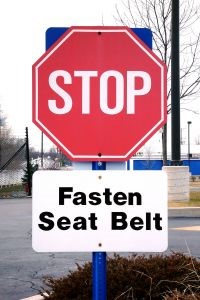Study Shows States With Fewer Work Injuries Have More Workplace Fatalities
While there are many federal worker protection laws, individual states have a lot of leeway as far as setting workers’ compensation rules and as far as enforcing worker safety regulations.
Recently, one study compared workplace injury and fatality rates across different states to see how each was doing with protecting workers. The study was conducted by the RAND Corporation and it used data from the Bureau of Labor Statistics to estimate the rate of workplace injuries and workplace fatalities in different states in the country. 
Our San Antonio work injury attorneys know that most people would assume a high rate of workplace injuries and a high rate of workplace deaths would go hand-in-hand. In fact, the opposite turned out to be true. In states where there were a lot of reports of non-fatal work injuries, there were fewer workplace fatalities and vice versa.
Understanding the Workplace Injury Study
At first, the study data seemed counter-intuitive. After all, if workplaces are unsafe enough to cause high rates of workplace deaths, it seems like it should be obvious that these same worksites would also cause lots of injuries.
After considering the data, however, researchers came to the conclusion that the results of the study could be easily explained. The explanation is a basic one: states with better workers’ compensation laws and with more protections for workers tend to have more reported non-fatal injuries but safer workplaces.
When a state has a business and regulatory climate that is protective of workers, workers are more likely to feel comfortable reporting injuries and are more likely to make reports of injuries in order to take advantage of generous workers’ compensation benefits. Thus, these states will have a higher rate of reported non-fatal workplace injuries.
Since non-fatal injuries are reported with greater frequency, worksite safety can be improved and worksites may be inspected more regularly to ensure that employers are taking steps to make the work areas safer. Better worker protections and increased injury reports will, therefore, result in worksites where fewer fatal injuries occur.
When a state doesn’t have very strong worker protection laws or is not generous in workers’ comp benefits, on the other hand, fewer workplace injuries are likely to be reported. As a result, these states will have a lower rate of nonfatal workplace injuries. Since there are fewer unions, less protections for workers and fewer chances to fix safety violations, it also stands to reason that the death toll in these states will be higher.
This conclusion is supported by the fact that most of the states with high fatality and low injury rates are southern states that tend to have less favorable workers’ compensation and worker protection laws. Texas is an example of one such southern state.
According to Think Progress, Texas has the highest rate of workplace fatalities out of every state in the United States. This is bad news for the Lone Star State, and the recent tragic accident in West Texas demonstrated that the high number of workplace deaths may have something to do with a lax regulatory environment and employers not taking workplace safety seriously.
Obviously, the outcome of this study shows that there may be a need to make some fundamental changes in order to better protect workers from death on the job.
If you’ve been injured in an accident, contact the Herrera Law Firm at 800-455-1054 for a free case evaluation.







